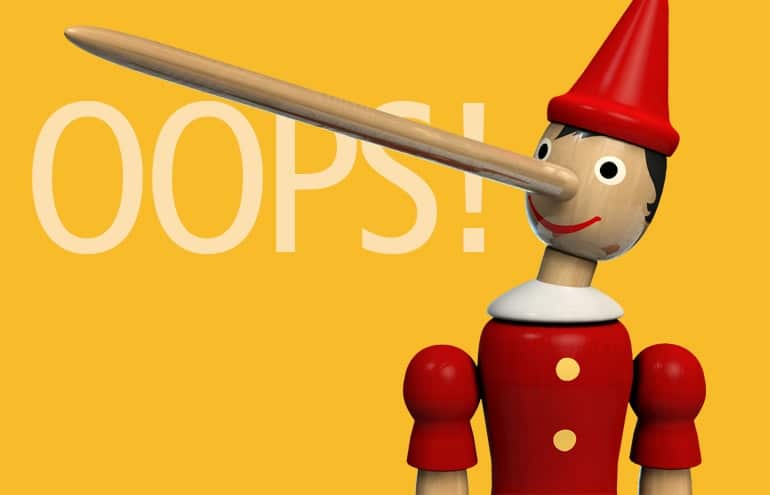The state rules that govern attorney advertising are on the move. Utah and Arizona recently adopted dramatic changes and several other states have amendments to their rules on the table. One thing that is not changing is the cornerstone prohibition against false or misleading advertisements. This rule lies at the intersection of our need to promote our services and distinguish ourselves from competitors and the legal profession’s responsibility to protect consumers in search of legal services.
Past the Surface of Rule 7.1
Every state has a variation of ABA Model Rule 7.1, which concisely states, “A lawyer shall not make a false or misleading communication about the lawyer or the lawyer’s services. A communication is false or misleading if it contains a material misrepresentation of fact or law, or omits a fact necessary to make the statement considered as a whole not materially misleading.”
On the surface, this certainly makes sense — you can’t lie and you can’t deceive potential clients. However, if we peel the onion a bit we see that the last part of this rule tends to restrict our efforts to set ourselves apart in our advertising messages.
What, exactly, does it mean to omit “a fact necessary to make the statement considered as a whole not materially misleading”? Sounds a bit like word salad. Generally, we can look to the comments accompanying the rules to get some direction. In this case, though, the comment merely mirrors the language of the rule and leaves it to lawyers to figure it out — a sort of “I know it when I see it” situation.
So, Let’s Break This Down
There are some advertisements that are just outright misleading. My favorite example of a misleading communication involves a lawyer who took photos of celebrities and politicians and overlaid photos of herself appearing to be standing next to them. These doctored photos were then posted on her website.
But, omissions can be trickier than just straight-up misrepresentations.
One of the most common examples involves ads that state something along the lines of “no recovery — no fee.” Sometimes a law firm will in fact not impose any financial obligations on its clients. However, when the firm charges costs of the case, such as filing fees, transcript costs and expert witnesses’ charges, cases and opinions have indicated that potential clients do not distinguish between attorney’s fees and case costs and are deceived into believing no expense will be involved. In this circumstance, the law firm needs to indicate that the client may be responsible for costs. (Here’s a useful checklist for attorneys who advertise.)
Some states regard advertisements to be misleading when they aggregate information, such as the number of years of experience — “FOR OVER 40 YEARS, WE’VE BEEN PUTTING EXPERIENCE, KNOWLEDGE, AND SKILLS TO WORK FOR PEOPLE LIKE YOU.” — or the amount of verdicts or settlements — Over $10 million recovered! The problem is that potential clients can construe these aggregated terms to be singular. In other words, when a firm advertises that it has over 40 years of experience, it may not have any lawyers with anywhere near that level of experience. Likewise, aggregating the amounts of recoveries may lead potential clients to believe the firm has received a single recovery of that amount.
Lawyers may also mislead by omission when they overstate outcomes or credentials. For example, if a lawyer advertises a $1 million recovery in a particular case, but during negotiations rejected a settlement offer for $2 million, that omission could be viewed as deceptive.
Similarly, if a law firm advertises that it has over 1,000 five-star ratings, but ignores that a high percentage of its ratings were only one star, this representation could be deceptive without more information.
Some More Subtle Omissions
A few jurisdictions have opined that advertising listings in “self-laudatory” directories are unethical if the ad omits information about the criteria for being included in the directory. Also, it may be misleading when a lawyer was listed in a self-laudatory directory one time a decade ago and positions the ad as if the listing is current by merely including an icon of the directory, for example.
A few jurisdictions have zeroed in on even more subtle omissions. Some opine that it is deceptive for a firm to fail to include the lawyers’ states of admission under some circumstances. Some states have rules prohibiting the use of stock photos unless the ad identifies them as dramatizations. Others require paid endorsements to be identified as being paid. A few states deem it to be an omission if a former judge is identified as a “Judge” without denoting the judge is retired or is a former judge. (See, e.g., Michigan Rule of Professional Conduct 7.1.)
The requirements for these explanations — or in ethics speak, additions that would make the communication as a whole not misleading — are particularly burdensome when lawyers advertise through social media platforms that have space restrictions. A few jurisdictions have addressed this, including Florida and New York, and concluded that the rules are the rules and lawyers must comply regardless of the difficulty caused by the restraints imposed by the medium.
Where the Buck Stops
Finally, lawyers need to be concerned that they are culpable for the acts of their agents. When they participate in group-advertising programs or assign out a portion of their advertising to marketers, for example, they need to be cautious that the ads include the information necessary to avoid misrepresentations.
Misrepresentation by omission can be subtle. However, it is every bit a violation of the rules as straight-up false statements. As lawyers use their advertisements to distinguish themselves from their competitors, they need to be aware of the obligation to avoid misleading potential clients through omissions.
Illustration ©iStockPhoto.com
You Might Also Like …
“Ethics of Virtual Consultations” by Megan Zavieh
“Three Things to Do When There’s Not Enough Work” by Teddy Snyder
“The Ethics of the Pivot “by Will Hornsby
Subscribe to Attorney at Work
Get really good ideas every day for your law practice: Subscribe to the Daily Dispatch (it’s free). Follow us on Twitter @attnyatwork.

















